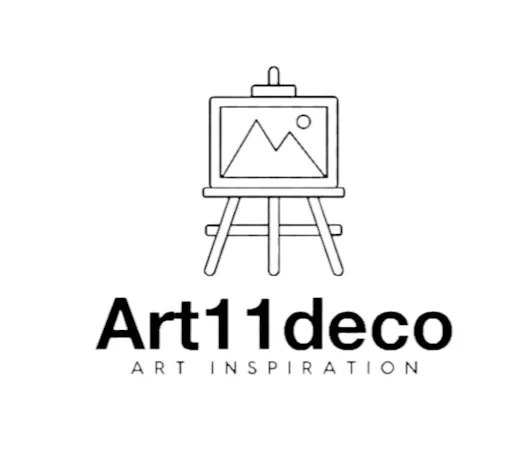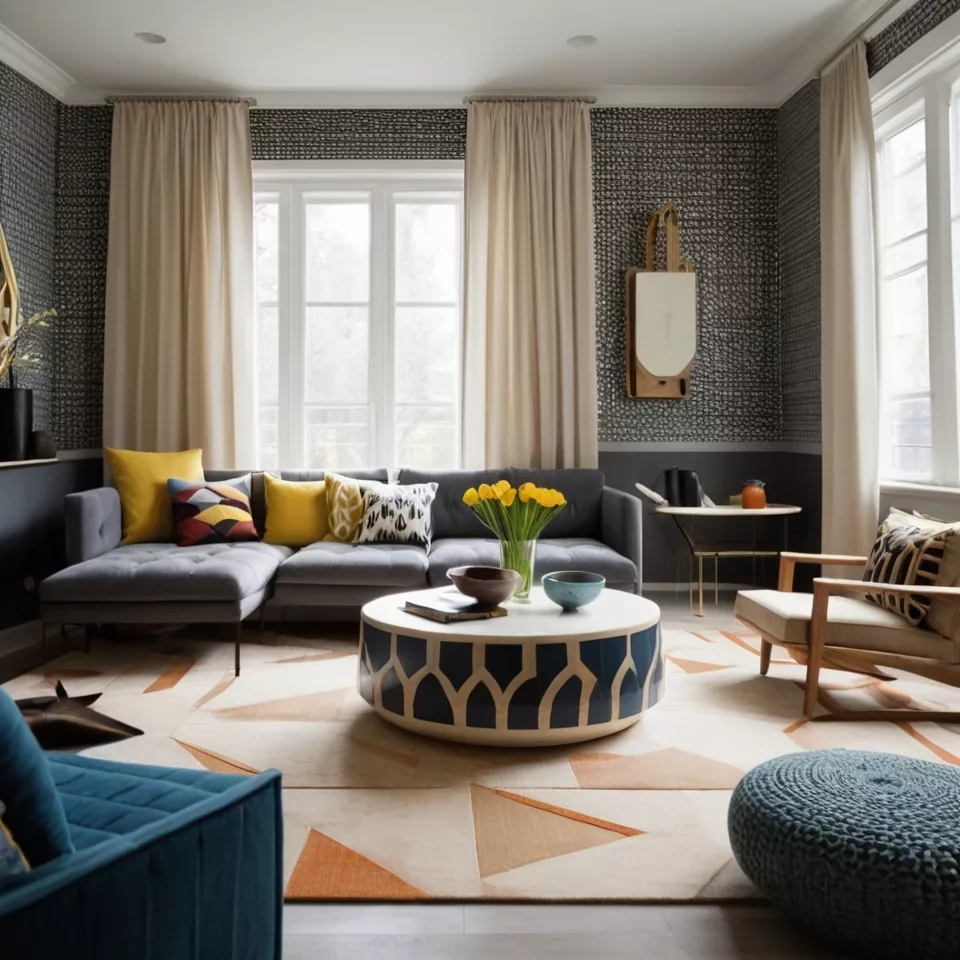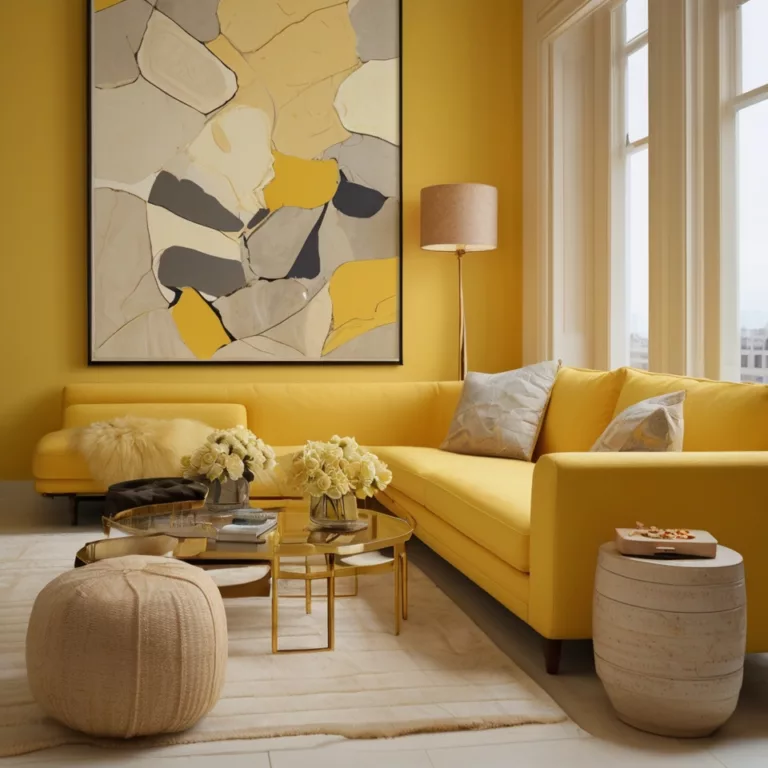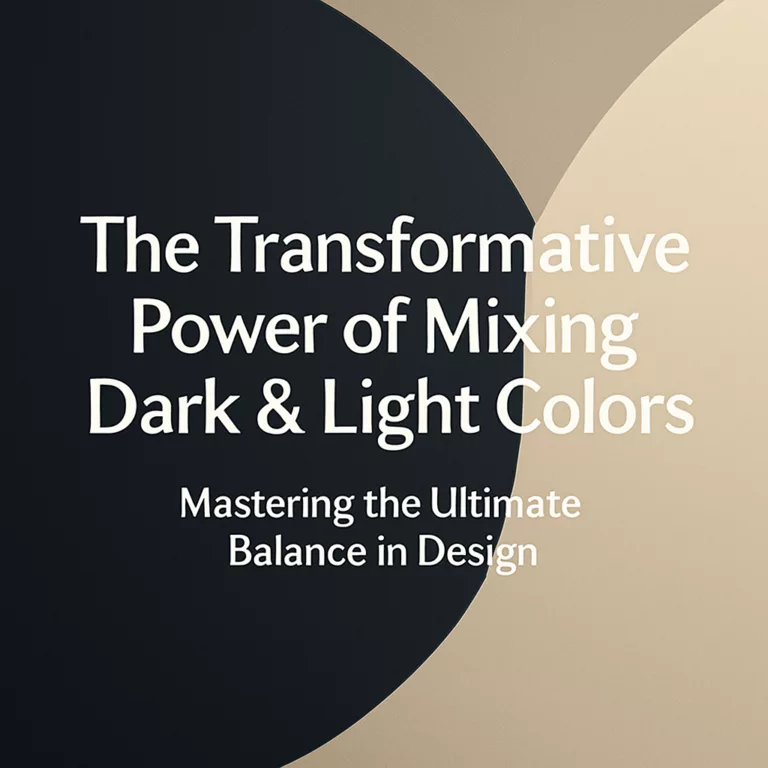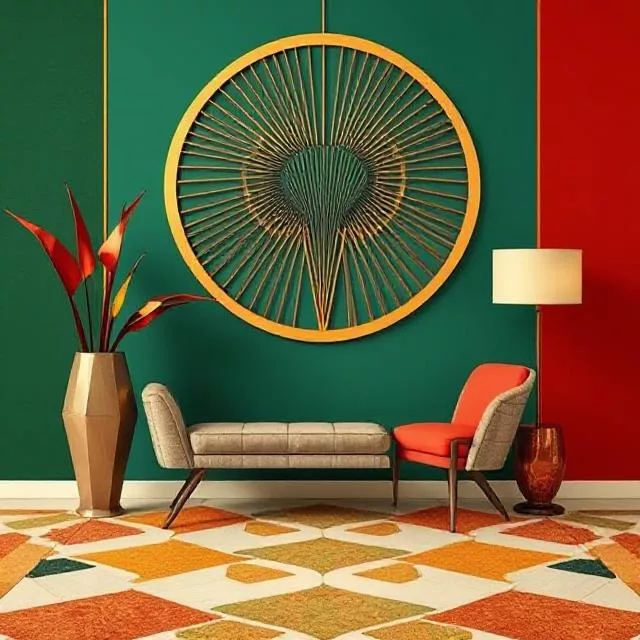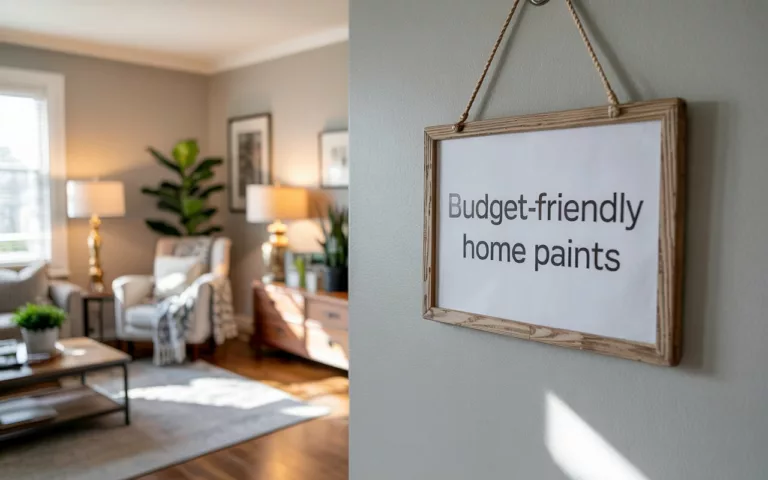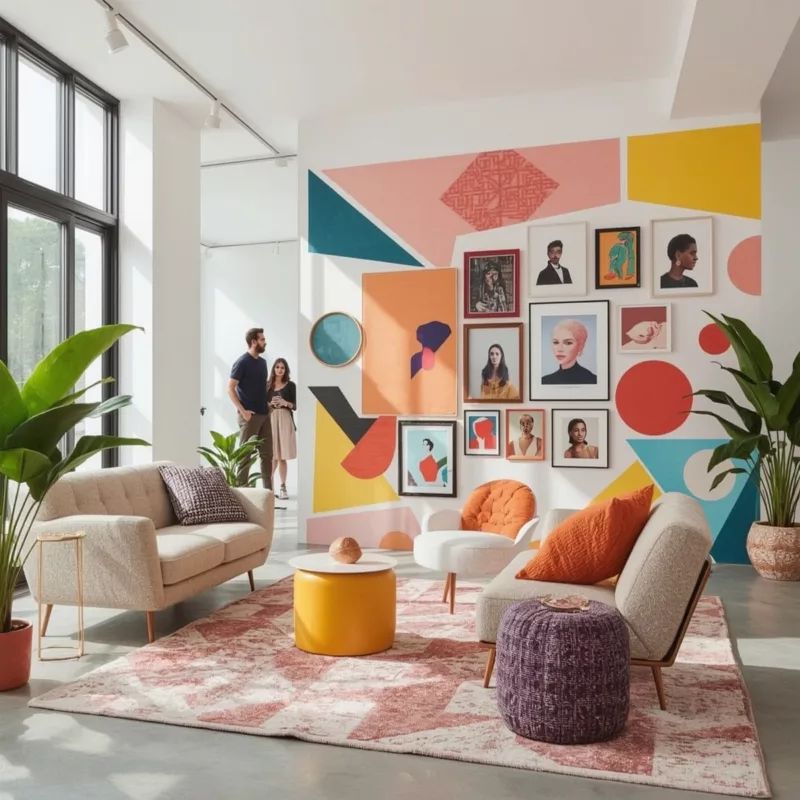
Table of Contents
- Introduction to Geometric Patterns
- The Psychology of Geometric Patterns in Design
- Types of Geometric Patterns in Modern Interiors
- Color Theory and Geometric Patterns
- Scale and Proportion in Geometric Design
- Geometric Patterns in Different Room Types
- Wall Applications for Geometric Patterns
- Flooring and Geometric Pattern Integration
- Textile and Fabric Geometric Applications
- Furniture Design with Geometric Elements
- Lighting and Geometric Pattern Enhancement
- Art and Decorative Objects with Geometric Motifs
- Outdoor Space Geometric Pattern Applications
- Technology and Digital Geometric Patterns
- Cultural Influences on Geometric Pattern Design
- Sustainable Approaches to Geometric Pattern Design
- Budget-Friendly Geometric Pattern Solutions
- Common Mistakes in Geometric Pattern Implementation
- Future Trends in Geometric Pattern Design
- Conclusion and Implementation Strategies
Introduction to Geometric Patterns
Geometric patterns have emerged as one of the most powerful design tools for transforming modern spaces from bland to brilliant. These mathematically inspired designs bring structure, rhythm, and visual energy to contemporary interiors while maintaining the clean, sophisticated aesthetic that defines modern design philosophy.
The resurgence of geometric patterns in modern interior design reflects our innate human attraction to order, symmetry, and mathematical beauty. From ancient Islamic architecture to contemporary Scandinavian design, geometric motifs have consistently provided designers with versatile tools for creating visually compelling spaces that engage viewers on both conscious and subconscious levels.
Modern geometric patterns range from simple stripes and chevrons to complex tessellations and fractal-inspired designs. Each pattern type offers unique opportunities for adding personality, movement, and visual interest to spaces that might otherwise feel sterile or uninspiring.
The key to successfully incorporating geometric patterns lies in understanding their visual impact, scale relationships, and interaction with other design elements. When applied thoughtfully, these patterns can transform ordinary rooms into extraordinary spaces that feel both contemporary and timeless.
Geometric patterns work particularly well in modern spaces because they complement the clean lines, minimal ornamentation, and functional focus that characterize contemporary design. Rather than competing with architectural elements, well-chosen geometric patterns enhance and highlight the structural beauty of modern interiors.
The Psychology of Geometric Patterns in Design
The psychological impact of geometric patterns extends far beyond their visual appeal, influencing mood, perception, and behavior in ways that make them particularly effective for creating dynamic modern spaces. Research in environmental psychology demonstrates that geometric designs can stimulate cognitive function, reduce stress, and enhance creativity.
Geometric patterns trigger our brain’s pattern recognition systems, creating a sense of order and predictability that many people find psychologically comforting. This subconscious response to mathematical relationships and symmetrical designs helps explain why geometric motifs have appeared consistently across cultures and historical periods.
The directional qualities of many geometric patterns can influence movement and flow within spaces. Diagonal patterns create energy and movement, while horizontal patterns promote calm and stability. Vertical geometric designs can make spaces feel taller and more dramatic, affecting how occupants perceive and interact with their environment.
Color psychology combines with geometric form to create powerful emotional responses. Bold geometric patterns in vibrant colors can energize and motivate, while subtle geometric designs in neutral tones provide sophisticated visual interest without overwhelming the senses.
The repetitive nature of geometric patterns can create meditative qualities in interior spaces. Regular patterns with consistent spacing and proportions can promote feelings of calm and focus, making them particularly suitable for work environments, bedrooms, and meditation spaces.
Cognitive load theory suggests that well-designed geometric patterns can actually reduce mental fatigue by providing organized visual information that the brain can process efficiently. This makes geometric designs particularly valuable in spaces where concentration and productivity are important.
Types of Geometric Patterns in Modern Interiors
Geometric patterns encompass a vast range of design possibilities, each offering unique characteristics and applications in modern interior design. Understanding different pattern types helps designers and homeowners select the most appropriate options for their specific needs and aesthetic goals.
Linear geometric patterns including stripes, chevrons, and zigzags provide strong directional elements that can guide eye movement and create visual pathways within spaces. These patterns work particularly well for defining areas, creating focal points, and adding energy to otherwise static compositions.
Circular and curved geometric patterns soften the angular nature of modern interiors while maintaining geometric integrity. Dots, circles, spirals, and wave patterns can provide contrast to the straight lines and sharp angles that dominate contemporary architecture and furniture design.
Grid-based geometric patterns including squares, rectangles, and checkerboards offer versatility and scalability that make them suitable for various applications from small accent pieces to large wall installations. These patterns provide structure and organization while allowing for creative color and scale variations.
Triangular geometric patterns including triangles, diamonds, and hexagonal designs create dynamic visual tension and energy. These angular patterns are particularly effective for adding drama and sophistication to modern spaces while maintaining clean, contemporary aesthetics.
Complex geometric patterns such as tessellations, fractals, and Islamic-inspired designs offer opportunities for creating intricate, sophisticated visual experiences. These patterns work well as statement elements that can serve as focal points or artistic features within modern interiors.
Three-dimensional geometric patterns created through lighting, shadows, or textural elements add depth and complexity to flat surfaces. These patterns can transform walls, ceilings, and floors into dynamic architectural features that change throughout the day as lighting conditions shift.
Color Theory and Geometric Patterns
The relationship between color and geometric patterns plays a crucial role in determining the visual impact and emotional response these designs create in modern spaces. Understanding color theory principles helps maximize the effectiveness of geometric pattern applications.
Monochromatic geometric patterns using variations of a single color create sophisticated, cohesive looks that integrate seamlessly with modern design aesthetics. These patterns provide visual interest through form and texture rather than color contrast, making them suitable for minimalist and contemporary interiors.
Complementary color schemes in geometric patterns create high-contrast, energetic designs that can serve as powerful focal points in modern spaces. The tension between opposing colors on the color wheel adds vitality and drama while maintaining the structured nature of geometric forms.
Analogous color combinations in geometric patterns provide harmonious, flowing visual experiences that feel both dynamic and peaceful. These color relationships work particularly well in residential spaces where comfort and relaxation are priorities alongside visual interest.
Neutral geometric patterns using black, white, and gray tones offer timeless sophistication that works well with changing decor and seasonal updates. These patterns provide strong graphic impact without committing to specific color schemes that might become dated or limiting.
Accent color integration allows geometric patterns to highlight and reinforce color schemes established elsewhere in the room. Strategic use of accent colors within geometric designs can tie together diverse elements and create cohesive interior compositions.
Temperature contrasts in geometric patterns using warm and cool colors simultaneously can create dynamic, engaging designs that change appearance under different lighting conditions. These temperature relationships add complexity and visual interest to pattern applications.
Scale and Proportion in Geometric Design
The scale and proportion of geometric patterns significantly influence their visual impact and appropriateness for different spaces and applications. Understanding these relationships is essential for successful pattern implementation in modern interiors.
Large-scale geometric patterns create bold, dramatic statements that work well as focal points or feature walls in spacious modern interiors. These patterns can help define areas, create visual anchors, and add personality to otherwise minimal spaces.
Small-scale geometric patterns provide texture and subtle visual interest without overwhelming the space or competing with architectural features. These patterns work well for accessories, textiles, and areas where pattern is desired without dramatic impact.
Medium-scale geometric patterns offer versatility and balance, providing sufficient visual interest while maintaining compatibility with various room sizes and furniture scales. These patterns work well for upholstery, area rugs, and window treatments in most modern interiors.
Proportional relationships between geometric patterns and surrounding elements affect how patterns are perceived and their overall success in interior compositions. Patterns should relate harmoniously to furniture sizes, room proportions, and architectural details.
Progressive scaling in geometric patterns can create dynamic visual experiences that guide eye movement and create depth perception. Starting with large patterns and progressing to smaller ones, or vice versa, can add sophisticated visual complexity to modern spaces.
Mixed-scale geometric patterns within single applications can create rich, layered compositions that provide multiple levels of visual engagement. Careful balance of different scales prevents chaos while maintaining interest and sophistication.
Geometric Patterns in Different Room Types
Geometric patterns manifest differently across various room types, with each space presenting unique opportunities and challenges for successful pattern integration. Understanding room-specific considerations helps optimize pattern selection and application.
Living room geometric patterns often serve as conversation starters and focal points that reflect personal style while maintaining the sophisticated atmosphere appropriate for social gatherings. Large-scale patterns work well on feature walls, while smaller patterns can be incorporated through textiles and accessories.
Kitchen geometric patterns must balance visual appeal with practical considerations including cleaning, durability, and food safety. Backsplash tiles, flooring patterns, and cabinet hardware offer opportunities for geometric integration without compromising functionality.
Bedroom geometric patterns require careful consideration of their psychological impact on rest and relaxation. Subtle patterns in calming colors can add visual interest without overstimulating, while bolder patterns might be reserved for accent walls or decorative elements.
Bathroom geometric patterns work particularly well due to the tile-based nature of many bathroom surfaces. Shower surrounds, floors, and accent walls provide excellent canvases for geometric designs that can transform utilitarian spaces into spa-like retreats.
Home office geometric patterns can enhance productivity and creativity while maintaining professional appearances suitable for video conferences and client meetings. Patterns should energize without distracting from work activities.
Dining room geometric patterns can create sophisticated atmospheres for entertaining while remaining appropriate for everyday family meals. Wallpaper, lighting fixtures, and table linens offer opportunities for geometric pattern integration.
Wall Applications for Geometric Patterns
Wall surfaces provide the largest canvases for geometric patterns in modern interiors, offering numerous application methods and design possibilities that can dramatically transform spaces while maintaining contemporary aesthetics.
Wallpaper geometric patterns have evolved significantly from traditional designs, now offering sophisticated, contemporary options that complement modern furniture and architectural elements. Digital printing technologies enable custom patterns and colorways that perfectly match specific design visions.
Paint application geometric patterns created through stenciling, tape techniques, or freehand painting provide cost-effective options for adding geometric elements to walls. These DIY-friendly approaches allow for complete customization and easy updates as design preferences evolve.
Wall decal geometric patterns offer temporary or semi-permanent solutions that are particularly suitable for renters or those who prefer flexibility in their design choices. High-quality vinyl decals can create sophisticated geometric designs that rival painted or wallpapered applications.
Textural geometric patterns created through materials like wood, metal, or fabric can add three-dimensional interest to wall surfaces while maintaining geometric integrity. These applications work particularly well as feature walls or architectural accents.
Tile geometric patterns on walls provide durable, water-resistant options that work well in kitchens, bathrooms, and other high-moisture areas. Modern tile manufacturing offers unprecedented variety in geometric shapes, sizes, and patterns.
Mixed media geometric patterns combining different materials, textures, and application methods can create unique, custom wall treatments that serve as artistic focal points in modern interiors.
Flooring and Geometric Pattern Integration
Floor applications of geometric patterns provide foundation elements that can establish design themes, define spaces, and create visual continuity throughout modern interiors while maintaining the practical requirements of durable, functional flooring.
Tile flooring geometric patterns offer durability, water resistance, and endless design possibilities ranging from classic checkerboards to contemporary hexagonal layouts. Modern manufacturing techniques enable precise geometric shapes and consistent pattern execution.
Hardwood flooring geometric patterns created through different wood species, grain directions, or installation techniques can add sophisticated geometric elements to floors while maintaining the natural warmth and beauty of wood materials.
Area rug geometric patterns provide flexible opportunities for introducing geometric designs without permanent commitment. Rugs can define seating areas, add color and pattern, and be easily changed as design preferences evolve.
Luxury vinyl tile (LVT) geometric patterns offer cost-effective alternatives to natural materials while providing unlimited geometric design possibilities. Digital printing technologies enable photorealistic reproductions of natural materials with geometric pattern overlays.
Concrete flooring geometric patterns created through scoring, staining, or stamping techniques provide industrial-chic options that work particularly well in modern and contemporary interiors with exposed structural elements.
Carpet geometric patterns designed for modern interiors move beyond traditional floral motifs to embrace clean, contemporary geometric designs that complement modern furniture and architectural elements while providing comfort and acoustic benefits.
Textile and Fabric Geometric Applications
Textile applications of geometric patterns provide opportunities for introducing pattern, color, and texture into modern spaces through easily changeable elements that can evolve with design preferences and seasonal updates.
Upholstery fabric geometric patterns can transform furniture pieces into statement elements while maintaining the clean lines and contemporary silhouettes characteristic of modern design. Scale and color selection should complement rather than compete with furniture forms.
Window treatment geometric patterns including curtains, blinds, and shades can filter light, provide privacy, and add visual interest while maintaining the uncluttered aesthetic preferred in modern interiors. Pattern selection should consider light transmission and room functionality.
Throw pillow geometric patterns offer low-commitment opportunities for experimenting with different geometric designs, colors, and scales. Multiple pillows with related geometric patterns can create layered, sophisticated compositions on modern seating.
Bedding geometric patterns can transform bedrooms from bland to bold while maintaining the restful atmosphere necessary for quality sleep. Pattern intensity and color selection should align with the room’s primary function and desired ambiance.
Table linen geometric patterns can elevate dining experiences while protecting surfaces and adding visual interest to table settings. Patterns should complement dishware and enhance rather than compete with food presentation.
Decorative textile geometric patterns including wall hangings, throws, and decorative panels can add softness and visual interest to hard-surfaced modern interiors while maintaining contemporary aesthetics.
Furniture Design with Geometric Elements
Modern furniture design increasingly incorporates geometric patterns and motifs, creating pieces that serve as both functional elements and artistic statements within contemporary interior compositions.
Storage furniture geometric patterns can transform utilitarian pieces into decorative elements that contribute to overall design schemes. Bookcases, cabinets, and storage units with geometric details add visual interest while maintaining functionality.
Seating geometric patterns in upholstery or structural design can create focal points within modern living spaces. Chairs, sofas, and ottomans featuring geometric elements should balance comfort with visual impact.
Table design geometric patterns can be incorporated through base structures, surface patterns, or material combinations. Dining tables, coffee tables, and side tables with geometric elements add sophistication to modern interiors.
Case goods geometric patterns including dressers, credenzas, and entertainment centers can feature geometric hardware, surface treatments, or structural elements that enhance their visual appeal while maintaining functionality.
Custom furniture geometric patterns designed specifically for individual spaces can incorporate geometric elements that relate to architectural features, color schemes, or personal preferences while addressing specific functional requirements.
Modular furniture systems with geometric patterns provide flexibility and visual interest while adapting to changing space needs. These systems work particularly well in modern interiors where adaptability and efficiency are priorities.
Lighting and Geometric Pattern Enhancement
Lighting design plays a crucial role in showcasing geometric patterns effectively, with proper illumination enhancing pattern visibility, creating dramatic effects, and contributing to overall interior ambiance.
Direct lighting on geometric patterns can create strong contrast and definition that emphasizes pattern details and color relationships. Track lighting, spotlights, and directional fixtures work well for highlighting geometric wall treatments, artwork, or decorative elements.
Indirect lighting can soften geometric patterns and create subtle, sophisticated effects that integrate patterns seamlessly into overall interior compositions. Cove lighting, uplighting, and diffused sources work well for general pattern illumination.
Colored lighting effects can dramatically alter the appearance of geometric patterns, creating dynamic, changeable installations that adapt to different times of day, seasons, or occasions. LED technologies make colored lighting more accessible and energy-efficient.
Shadow patterns created by lighting geometric patterns or geometric light fixtures can add another layer of visual interest to modern spaces. Perforated screens, geometric fixtures, and strategic light placement can create ever-changing shadow patterns throughout the day.
Natural light interaction with geometric patterns should be considered during pattern planning and placement. Window orientation, seasonal light changes, and daily light movement can significantly affect how patterns appear in spaces.
Smart lighting systems can be programmed to highlight different geometric patterns at various times, creating dynamic environments that change throughout the day or for different activities and moods.
Art and Decorative Objects with Geometric Motifs
Artistic elements featuring geometric patterns provide opportunities for incorporating sophisticated pattern elements without committing to permanent installations or major renovations in modern interior spaces.
Wall art geometric patterns including prints, paintings, and digital art can serve as focal points that establish color schemes, add visual interest, and reflect personal style preferences. Scale and positioning should relate to furniture and architectural elements.
Sculptural objects with geometric patterns can add three-dimensional interest to modern interiors while maintaining the clean, uncluttered aesthetic preferred in contemporary design. These pieces work well as conversation starters and artistic focal points.
Decorative accessories featuring geometric patterns including vases, bowls, and decorative objects can introduce pattern elements in small doses that don’t overwhelm minimal modern interiors. These pieces can be easily changed as design preferences evolve.
Photography featuring geometric patterns either in subject matter or compositional structure can complement modern interiors while adding personal interest and artistic sophistication to wall displays.
Mixed media art incorporating geometric patterns can create unique, custom pieces that reflect individual style preferences while contributing to overall interior design schemes. These pieces work particularly well in modern interiors that appreciate artistic innovation.
Gallery wall compositions featuring multiple pieces with geometric patterns can create dramatic artistic installations that serve as major design elements in modern spaces while allowing for personal curation and ongoing evolution.
Outdoor Space Geometric Pattern Applications
Geometric patterns extend beyond interior spaces to outdoor areas, where they can create cohesive design relationships between indoor and outdoor environments while addressing the practical requirements of weather resistance and durability.
Patio and deck geometric patterns created through flooring materials, furniture arrangement, or decorative elements can establish outdoor rooms that feel designed and intentional rather than merely functional.
Garden design geometric patterns including planted beds, walkway layouts, and hardscape elements can create structured, modern outdoor spaces that complement contemporary architecture and interior design aesthetics.
Outdoor furniture geometric patterns through cushion fabrics, table designs, or structural elements can withstand weather exposure while maintaining visual interest and style consistency with interior design themes.
Screening and privacy elements with geometric patterns can provide necessary privacy and wind protection while adding decorative elements to outdoor spaces. Perforated screens, lattice designs, and geometric fencing offer both function and beauty.
Lighting geometric patterns in outdoor spaces can extend usability into evening hours while creating dramatic effects and highlighting landscape or architectural features. Solar technologies make geometric outdoor lighting more sustainable and cost-effective.
Water feature geometric patterns including fountain designs, pool shapes, and water wall treatments can add sophisticated geometric elements to outdoor spaces while providing cooling effects and sound masking.
Technology and Digital Geometric Patterns
Modern technology offers unprecedented opportunities for creating, customizing, and implementing geometric patterns in contemporary interior spaces through digital design tools, smart home integration, and innovative manufacturing techniques.
Digital projection geometric patterns can create temporary or changeable pattern installations that adapt to different occasions, seasons, or personal preferences. Projection mapping technologies enable complex geometric patterns on irregular surfaces.
Smart home integration allows geometric patterns in lighting, window treatments, and digital displays to be controlled and customized through mobile apps and automation systems. These technologies enable pattern environments that respond to daily routines and preferences.
3D printing technologies enable custom geometric patterns in furniture, decorative objects, and architectural elements that would be impossible or prohibitively expensive to create through traditional manufacturing methods.
LED strip lighting with programmable controls can create dynamic geometric patterns that change color, intensity, and configuration throughout the day or in response to environmental conditions or user preferences.
Digital wallpaper and display technologies can create changeable geometric patterns on wall surfaces, allowing for infinite customization and easy updates without physical renovation or redecoration.
Augmented reality applications enable visualization of geometric patterns in spaces before implementation, helping designers and homeowners make confident decisions about pattern selection, placement, and scale.
Cultural Influences on Geometric Pattern Design
Geometric patterns draw from rich cultural traditions worldwide, offering modern interior designers access to centuries of artistic development and cultural meaning that can add depth and significance to contemporary spaces.
Islamic geometric patterns with their complex mathematical relationships and spiritual symbolism provide sophisticated pattern options that work well in modern interiors seeking to incorporate cultural richness and artistic heritage.
Scandinavian geometric patterns emphasizing simplicity, functionality, and natural materials align perfectly with modern design principles while adding cultural authenticity and Nordic aesthetic sensibilities to contemporary interiors.
Art Deco geometric patterns from the early 20th century continue to influence modern design with their bold, glamorous approach to geometric motifs that celebrate both luxury and industrial efficiency.
Native American geometric patterns offer meaningful cultural connections while providing visually striking pattern options that work well in modern interiors seeking to honor indigenous artistic traditions and craftsmanship.
African geometric patterns with their vibrant colors and bold designs can add energy and cultural richness to modern spaces while celebrating the mathematical sophistication and artistic heritage of diverse African cultures.
Asian geometric patterns including Japanese, Chinese, and Korean motifs provide options for creating calm, balanced interiors that reflect Eastern philosophical approaches to space, harmony, and aesthetic beauty.
Sustainable Approaches to Geometric Pattern Design
Sustainable implementation of geometric patterns addresses environmental concerns while creating beautiful, responsible interior environments that minimize ecological impact without sacrificing aesthetic goals.
Eco-friendly material selection for geometric patterns includes recycled, renewable, and low-impact materials that provide pattern opportunities while supporting environmental responsibility and human health concerns.
Local sourcing of geometric patterns through regional artisans, manufacturers, and materials reduces transportation environmental costs while supporting local economies and cultural traditions.
Longevity-focused geometric patterns emphasize timeless designs that won’t quickly become dated, reducing the need for frequent updates and minimizing waste from discarded decorative elements.
DIY geometric patterns using sustainable techniques and materials allow homeowners to create custom pattern installations while controlling environmental impact and supporting creative self-expression.
Upcycling existing elements to create geometric patterns gives new life to discarded materials while reducing waste and creating unique, personalized pattern installations that reflect individual creativity and environmental consciousness.
Energy-efficient technologies for geometric patterns including LED lighting and smart controls minimize ongoing environmental impact while providing sophisticated pattern effects and user convenience.
Budget-Friendly Geometric Pattern Solutions
Creating stunning geometric patterns doesn’t require unlimited budgets, with numerous cost-effective strategies and techniques available for incorporating sophisticated pattern elements into modern interiors without financial strain.
DIY painting techniques for geometric patterns using tape, stencils, and basic painting supplies can create professional-looking results at a fraction of the cost of wallpaper or professional installation.
Removable geometric patterns including wall decals, temporary wallpaper, and peel-and-stick tiles provide budget-friendly options that work well for renters or those who prefer design flexibility.
Thrift store and secondhand geometric patterns through vintage textiles, artwork, and decorative objects can provide unique pattern elements at significantly reduced costs while adding character and authenticity to modern interiors.
Digital printing services enable custom geometric patterns for wallpaper, fabric, and artwork at increasingly affordable prices, allowing for personalized pattern designs without custom manufacturing costs.
Seasonal clearance shopping for geometric patterns in textiles, accessories, and decorative elements can significantly reduce costs while building pattern collections over time.
Multipurpose geometric patterns that serve multiple functions or can be used in various locations provide better value and flexibility than single-purpose pattern investments.
Common Mistakes in Geometric Pattern Implementation
Understanding common pitfalls in geometric patterns application helps avoid costly mistakes and ensures successful pattern integration that enhances rather than detracts from modern interior design goals.
Scale mismatches represent one of the most frequent mistakes in geometric patterns implementation, with patterns that are too large for small spaces or too small for large areas failing to achieve desired visual impact.
Color coordination failures occur when geometric patterns don’t relate to existing color schemes or when multiple patterns clash rather than complement each other within single spaces.
Overdoing pattern density can overwhelm modern interiors that rely on clean, uncluttered aesthetics for their effectiveness. Successful geometric patterns require balance and visual rest areas.
Ignoring functionality in geometric patterns selection can result in beautiful but impractical installations that don’t support the intended use of spaces or require excessive maintenance to remain attractive.
Poor installation quality can ruin even the most beautiful geometric patterns, making professional installation a worthwhile investment for permanent or highly visible pattern applications.
Trend-chasing in geometric patterns without considering long-term livability and personal preference can result in expensive pattern installations that quickly feel dated or inappropriate.
Future Trends in Geometric Pattern Design
The evolution of geometric patterns in modern interior design continues to be influenced by technological advances, cultural shifts, and environmental concerns that shape how patterns are created, implemented, and experienced.
Parametric design technologies enable increasingly complex geometric patterns that respond to environmental conditions, user preferences, or functional requirements through algorithmic generation and smart material integration.
Biophilic geometric patterns that incorporate natural mathematical relationships found in plants, crystals, and natural phenomena offer opportunities for creating patterns that feel both contemporary and connected to nature.
Interactive geometric patterns using touch-sensitive materials, motion sensors, or mobile app controls enable pattern installations that respond to human presence and interaction, creating dynamic, engaging environments.
Sustainable innovation in geometric patterns continues to develop through new materials, manufacturing processes, and design approaches that minimize environmental impact while maximizing aesthetic and functional benefits.
Cultural fusion in geometric patterns reflects increasingly global design influences and multicultural awareness, creating pattern opportunities that celebrate diversity while maintaining contemporary aesthetic sensibilities.
Wellness-focused geometric patterns incorporating research from environmental psychology and neuroscience offer opportunities for creating pattern installations that actively support human health, productivity, and well-being.
Conclusion and Implementation Strategies
Geometric patterns offer unlimited opportunities for adding vitality, sophistication, and personality to modern interior spaces while maintaining the clean, contemporary aesthetic that defines modern design. Success lies in understanding pattern relationships, scale considerations, and cultural contexts while remaining mindful of functionality and long-term livability.
The key to mastering geometric patterns involves starting with clear design goals, understanding space requirements, and selecting patterns that enhance rather than compete with architectural features and functional needs. Whether implementing subtle geometric accents or bold pattern statements, success requires careful planning and thoughtful execution.
Implementation strategies for geometric patterns should consider both immediate impact and long-term satisfaction, with pattern selections that reflect personal style while remaining flexible enough to accommodate changing preferences and lifestyle needs over time.
Budget considerations need not limit geometric patterns opportunities, with numerous cost-effective approaches available for creating sophisticated pattern installations through DIY techniques, strategic shopping, and creative repurposing of existing elements.
The future of geometric patterns in modern interior design promises exciting developments through technological innovation, sustainable practices, and cross-cultural influences that will expand creative possibilities while addressing contemporary concerns about environmental impact and human well-being.
Whether you’re drawn to bold, statement-making geometric patterns or prefer subtle, sophisticated geometric accents, the key lies in understanding pattern principles while remaining true to personal style preferences and practical living requirements. With careful planning and thoughtful implementation, geometric patterns can transform any modern space from ordinary to extraordinary.
For more interior design inspiration and professional geometric pattern design services, explore our extensive collection of pattern applications and expert design consultations.
